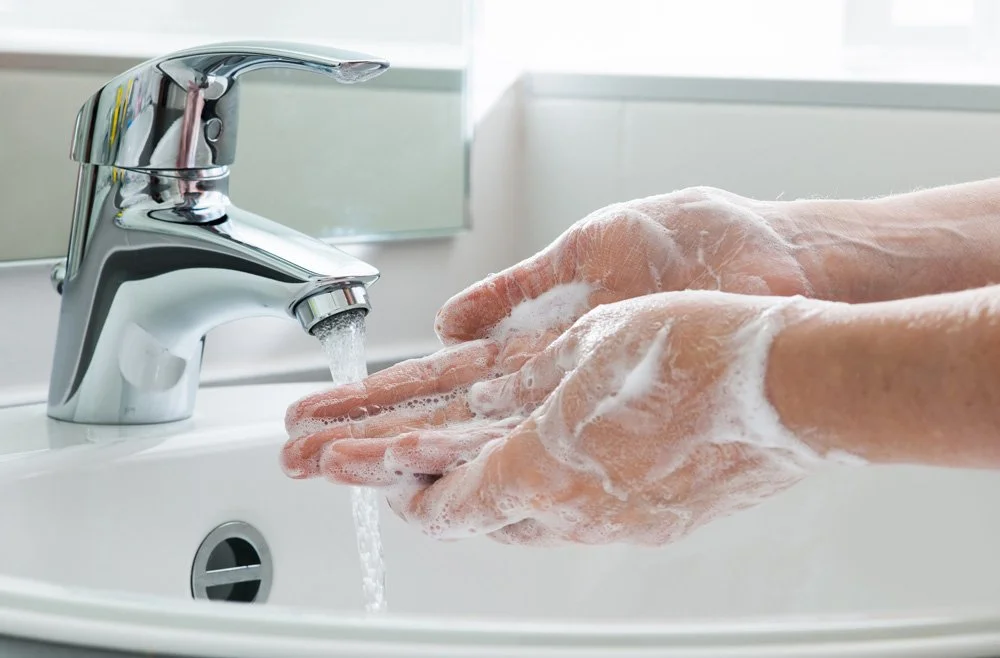Strep A 'Scarlet Fever'
At present, there is a lot of fear around the increase in Group A Strep infections. In this blog I will look at common symptoms, diagnosis, treatment and when to call your doctor. As a mother of two small children I am used to seeing them come home from school with infections. But it is important to be able to notice if an infection is more serious.
WHAT IS STREP A?
Scarlet fever is caused by bacteria called group A streptococci. These bacteria also cause other respiratory and skin infections such as strep throat and impetigo. In very rare occasions, the bacteria can get into the bloodstream and cause an illness called invasive Group A strep (iGAS). It is the most common cause of throat infections/tonsillitis during winter, but recently we are seeing a higher number of cases.
It is treatable with antibiotics and fluids and seeing a doctor is important to help make the diagnosis.
Around 10% percent of children between 3 and 15 years of age carry iGAS in the back of their throats. But how do we know if our child has a Strep A infection and not a viral infection?
DIAGNOSIS
No one sign or group of symptoms can accurately diagnose iGAS in kids with sore throats and a fever. There are tests to confirm if the infection is Group A Strep and this can be done by your doctor if needed, usually as a throat swab but must be done before antibiotics are started.
If your child is generally well but has a sore throat, swollen neck lymph nodes and fever for 48 hours, your doctor most likely will prescribe penicillin. This MUST be taken for 10 days and in some cases longer. (If your child becomes worse while on penicillin see your doctor immediately as they may need to change to a different antibiotic. If your child is allergic to penicillin your doctor will prescribe a suitable alternative.)
Group A Strep symptoms in children >3 years
💥Sore inflamed throat
💥fever,
💥headache,
💥Abdominal pain,
💥Enlarged tender front neck lymph nodes,
💥Red spots on the roof of the mouth
💥 possibly sandpaper rash or peeling of the fingertips.
💥Sore muscles or legs
Children <3 years
NB: A strawberry tongue is common with viral infection of the throat so it is not a reliable sign
💥Prolonged nasal discharge,
💥Tender neck lymph nodes, and
💥low-grade fever <38.3°C,
NB: A strawberry tongue is common with viral infection of the throat so it is not a reliable sign
The 'Sandpaper' Rash.
Scarlet fever is usually a mild illness, but can cause inflammation elsewhere in the body other than the throat.
This inflammation can also affect the skin.
💥The rash looks like a a fine, pale or pinkish/red tiny spots with a sandpapery or bumpy feel and it can be on the main body, torso and the arms.
💥Group A strep/scarlet fever can also cause peeling of the fingertips called desquamation.
💥If your child has a rash or peeling of the fingertips your doctor will want to examine them and listen to their heart and lungs and do a urine test.
💥Treating scarlet fever early is important to prevent infection or inflammation in other organs.
TREATMENT
We are more likely to suspect Strep A and treat it with an antibiotic:
if your child has been around someone with Strep A
If there has been an outbreak in their school or group.
If they are unwell with a sore throat
If a swab test is positive,
If you are as the parent or carer are concerned that they are not improving.
Remember Viral infections are ALSO common and their symptoms are varied from: Runny nose, Red sticky eyes, Cough, Hoarseness, Inflamed mouth with mouth ulcers, Diarrhoea.
IN THESE CASES we usually don’t want to give our children an antibiotic.
So unless YOUR CHILD has signs of Strep A or are at risk of Strep A your doctor will adopt a wait and watch approach or prescribe an antibiotic to use if they are no better in 2-3 days. This will only happen if your doctor has assessed your child and they are generally well.
WHEN TO CALL DOCTOR
As a parent, if you feel that your child seems seriously unwell, you should trust your own judgement. Contact NHS 111 or your GP if:
your child is getting worse
your child is feeding or eating much less than normal
your child has had a dry nappy for 12 hours or more or shows other signs of dehydration.
your baby is under 3 months and has a temperature of 38°C, or is older than 3 months and has a temperature of 39°C or higher
your baby feels hotter than usual when you touch their back or chest, or feels sweaty
your child is very tired or irritable
Call 999 or go to A&E if:
your child is having difficulty breathing – you may notice grunting noises or their tummy sucking under their ribs
there are pauses when your child breathes
your child’s skin, tongue or lips are blue.
your child is floppy and will not wake up or stay awake
PREVENTION
Remember to encourage your children to cover their mouths when coughing and wash hands regularly.
Good hand and respiratory hygiene are important for stopping the spread of many bugs. By teaching your child how to wash their hands properly with soap for 20 seconds, using a tissue to catch coughs and sneezes, and keeping away from others when feeling unwell, they will be able to reduce the risk of picking up or spreading infections.





